|
If You Play Defense, You Must Understand Offensive Formations and Personnel!Any good defensive player will tell you how important it is to be able to identify offensive formations, route concepts, and blocking schemes. Before any player can react on the field, they must first understand whats going on. This is all a thought process that must be done quickly while on the field. The more an athlete studies these identifications, the quicker the thought process & reaction time. Just another one of those mental elements that will give you a jump on your opponent, and allow you to play faster. The information below is essential to any defensive player learning how to play football, or even those in football coaching. Offensive Identification & CommunicationCommunication is a very important element of football. The following terms are used to help defenses communicate Offensive formations & personnel, or defensive responsibilities. The better you know these terms, the easier it will be to identify offensive movements and alignments. It will also become easier to communicate who is in the game, and what your responsibility is. Remember, the faster you can identify, the faster you can react, & the faster you can play! Basic Defensive Terminology Alert Seems- 3 deep alert for the threat of 4 verticals vs. 1 back 2x2 U- The second Tight End (T.E.) in a 2 tight end set; also can be a personnel group (22) V-drop- Zone drop working to 10 yards depth to the bottom of the numbers Weak Side- The side of the offensive formation away from the passing strength (away from the dominant) Wing- Two receivers (ex-T.E/FB) aligned next to each other in the core X (Split End)- Refers to the wide receiver on the weak side of a pro formation or to the outside receiver in a slot formation. Yac- T.E. motion across the formation Y-off- Alert given when the T.E. steps off the line of scrimmage Y (Tight End)- Tight End to run strength Y Flex- Split by T.E., Y is outside of his normal alignment Zac- WR motion across the formation Z (Flanker)- Refers to the Wide Receiver (WR) on the strong side of a pro formation on inside in a slot Formation Split Flow- One back moving strong while the other moves weak Sprint Out- Quarter Back (QB) opening without play fake and pulling up or threatening the corner. Stack- 2 WR aligned close together Plug- LB or DB Zoning the short middle area Primary Force- The player responsible for containing the end run Pro Set- A regular formation with the Y and Z on the same side and the X on the opposite side Red Zone- Defensive area on the field from +20 to +3 L.O.S.- Line of scrimmage Open Side- The side of offensive formation opposite the T.E. side Passing Strength- The side of the offensive formation having the dominate eligible receivers Play Action Pass- Action which simulates a running play before QB executes a pass playFlat Zone- Area from the numbers to the sideline Flip- Inside receiver aligned on the line of scrimmage & the outside receiver is aligned off the L.O.S. Check Down- A Running Back (RB) who first shows pass protection, then delays and runs a route inside the Offensive Tackle (O.T.) Closed Call- The side of offensive formation where we set the defense, designated by MLB Dig Route- Deep inside pass route. Breaks inside at 15-18 yards. Dot- Running Back set behind center Double Jelly- 2 sets of WR’s aligned closed together Down left/Right- Call directing rotation left or right Empty- No RB’s in backfield Offensive Personnel & PositionsNow that you have thoroughly studied the defensive terms, we can now begin identifying offensive personnel and player positions in offensive formations. Each offensive skill position (RB’s, WR’s, & TE’s) has a letter that corresponds with that specific position. This makes it much easier to identify different positions on the field. Offensive Personnel is identified by knowing how many running backs, and tight ends are in the game at once. Once we know this, we can then tell how many receivers are in the game also. For example, 22 personnel stands for 2 running backs, and 2 tight ends. Knowing this, we can then conclude that there is only 1 wide receiver in the game since 11 men are allowed on the field at once. Do you get it? Look below for more details.
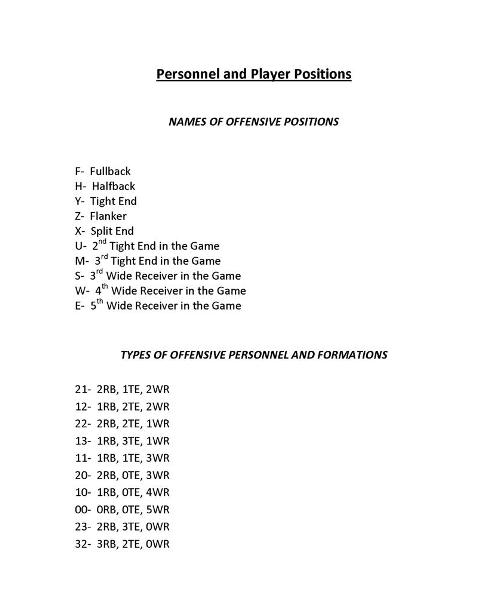
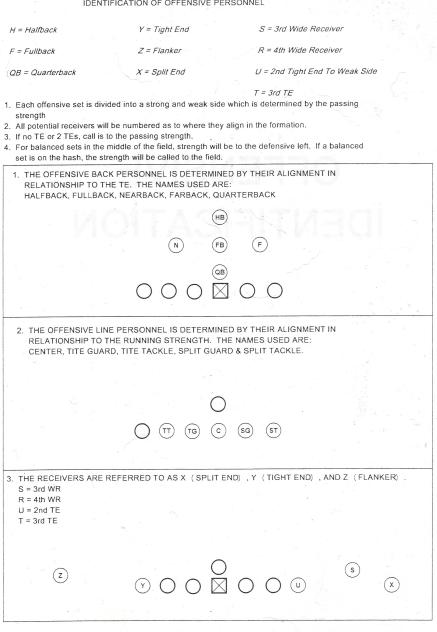
Offensive FormationsBelow we have formations that utilize different personnel groupings. As you go over these formations, take a look at which side the Y Tight End is on. This is the run strength side of the offensive formation. Also, be sure to take a look at the side of the offensive formation having the most dominate eligible receivers. This will be the offensive formations passing strength. As the MLB identifies the strength of the offense, he will then set the defense to that side by giving a "close call" either right or left. 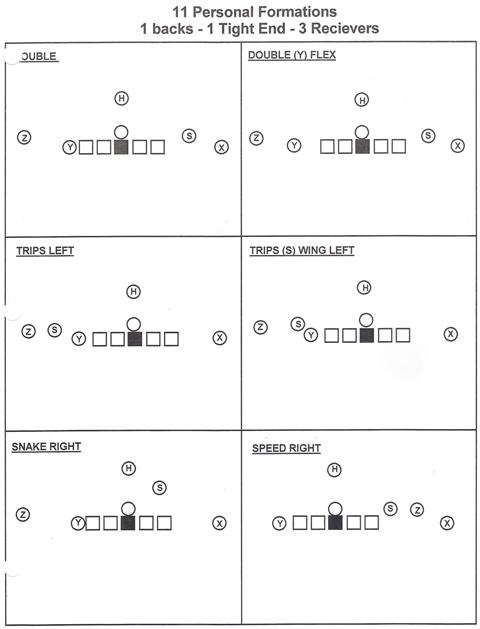
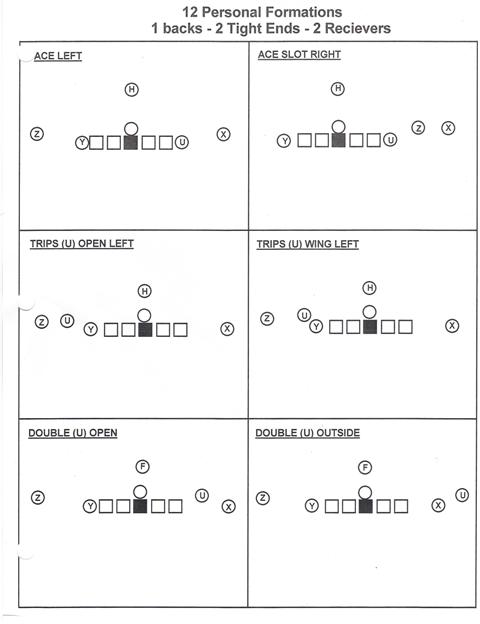
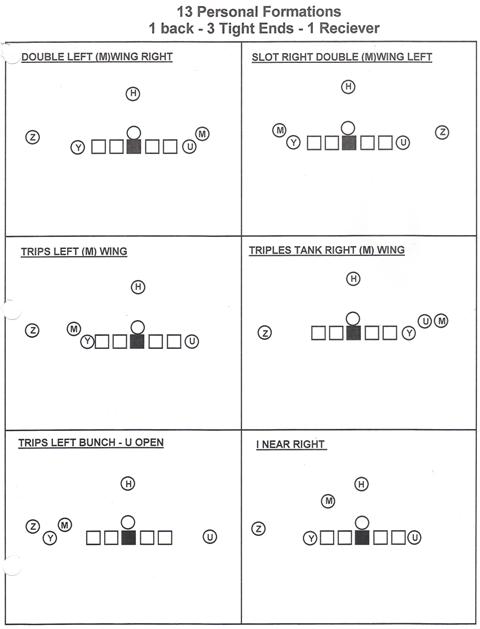
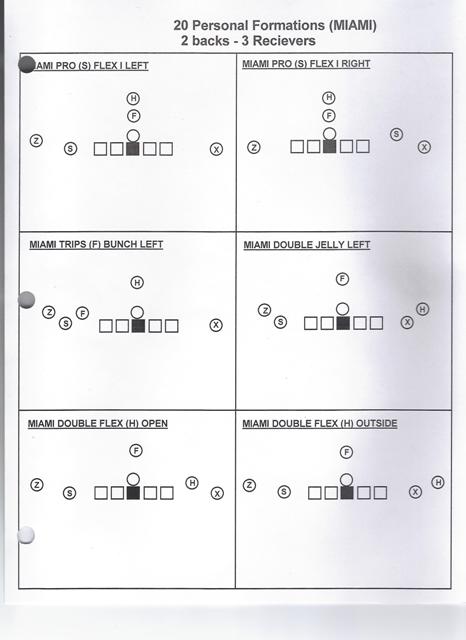
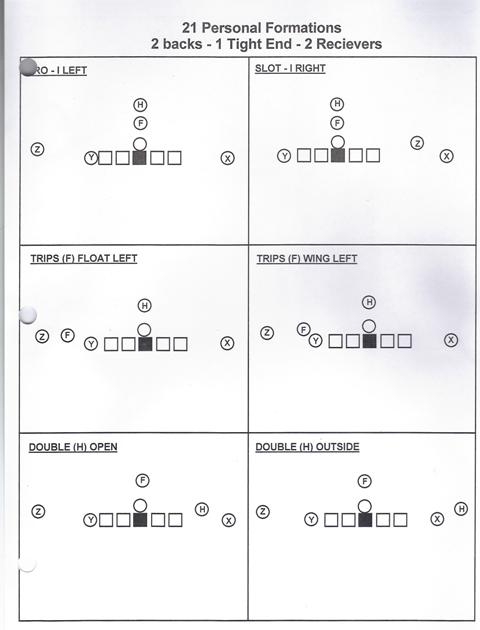
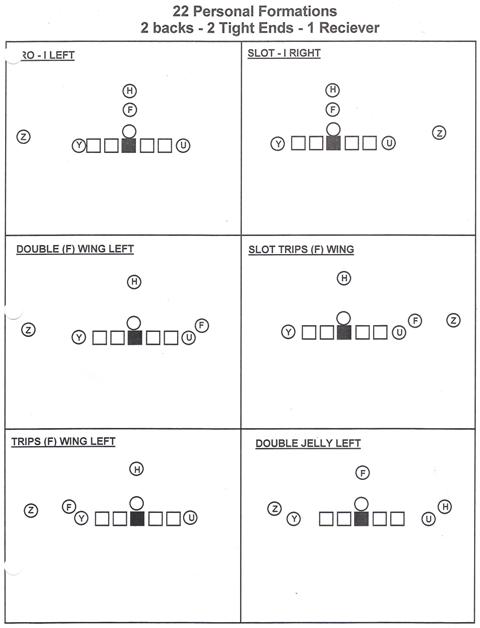
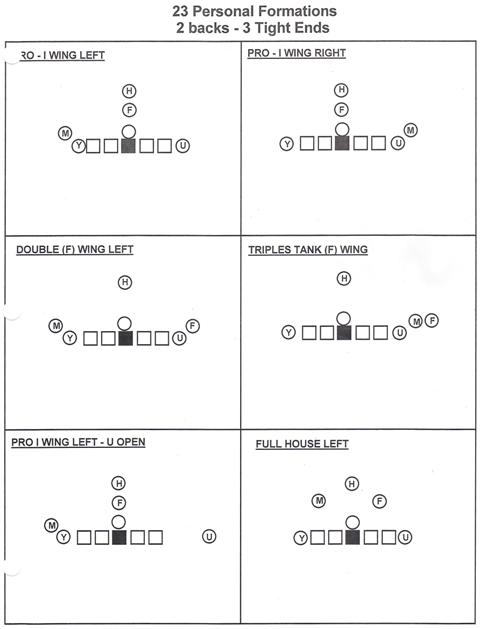
Back Field SetsWhen identifying back field sets check out the alignment of the RB. A running back aligned away from the T.E. or passing strength is in a “far” position while a RB aligned near the T.E. or passing strength is in a “near" position. If the backfield is in an I formation (RB aligned directly behind FB) it may be I left or right depending on the offensive strength. Try and identify the personnel while becoming familiar with these offensive formations. Once a player understands offensive personnel, he can then begin to narrow down formation possibilities, and play options. 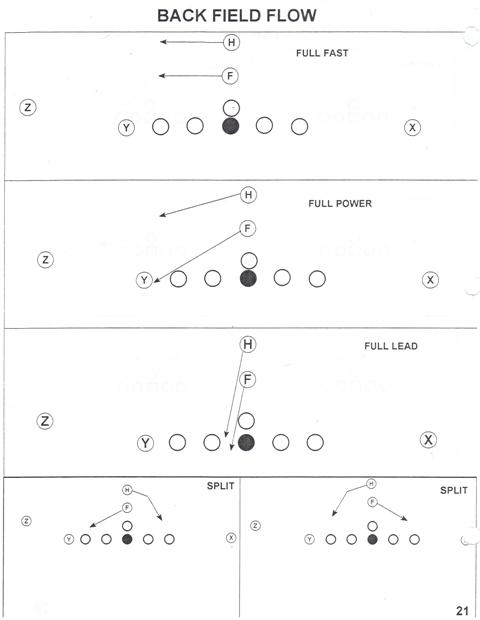
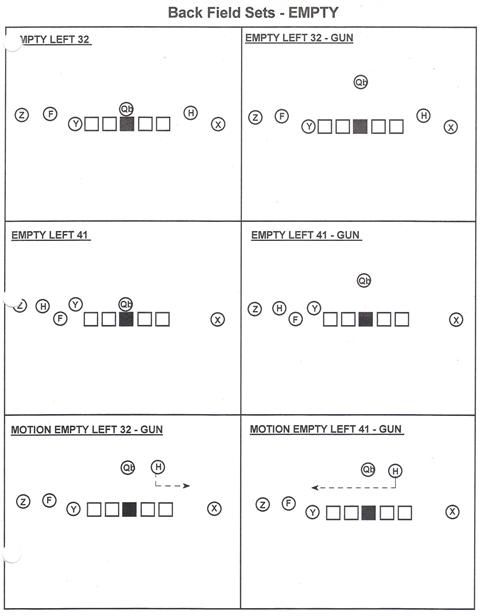
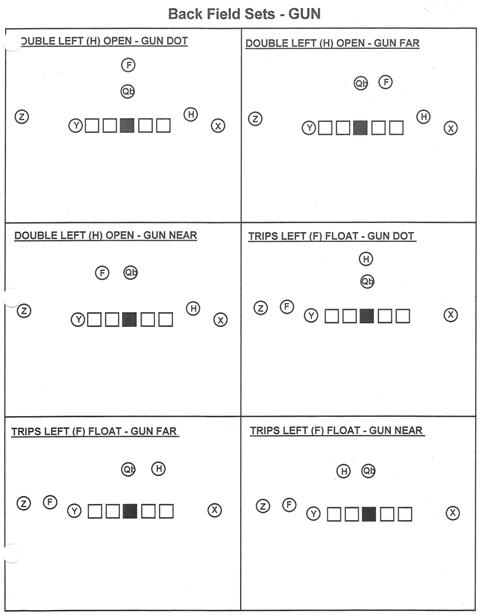
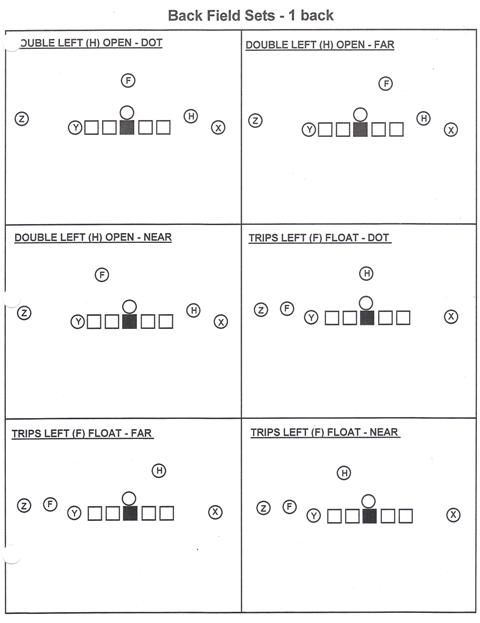
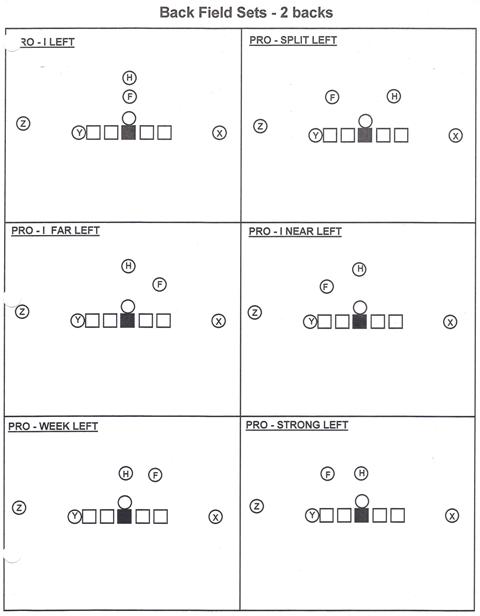
Offensive Pass ConceptsNow that you have a better understanding of offensive personnel, formations, and back field sets, take a look at the offensive pass route concepts below. Be sure to familiarize yourself with the names of these route concepts as they apply to any basic offensive scheme. Be sure to identify the personnel, formations, and backfield sets. 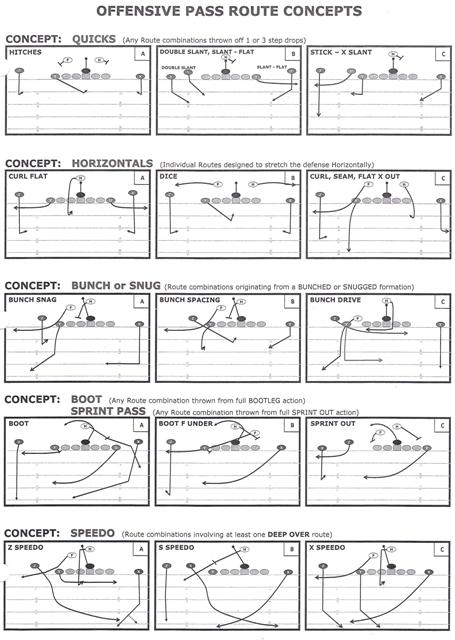
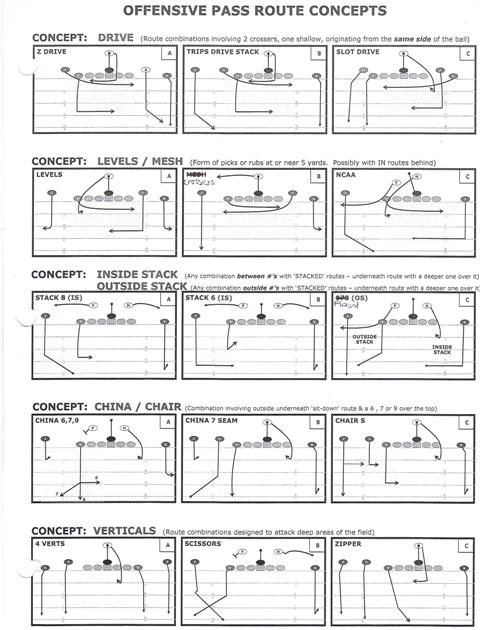
Offensive Blocking SchemesThe saying, "football games are won upfront" has shown to be true in every game. An offensive line that executes its blocking scheme effectively, gives its running back the best opportunity to break long runs, and the quarterback the best opportunity to complete passes. It all starts upfront! For every blocking scheme, their are "fits" that a defense must also execute in order to stop the offense. When the defensive line and linebackers execute the correct fits, they prevent big plays on the ground, and are more effective at containing the quarterback. Once again, it all starts upfront! Take a look at these basic blocking schemes, as they shows how you will be blocked, and where you will fit within these schemes. 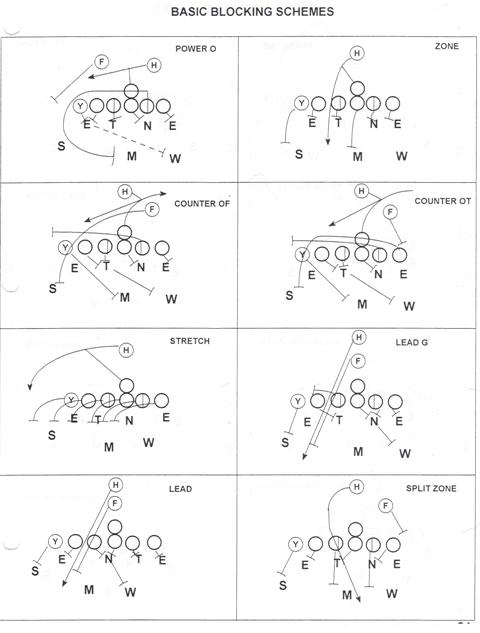
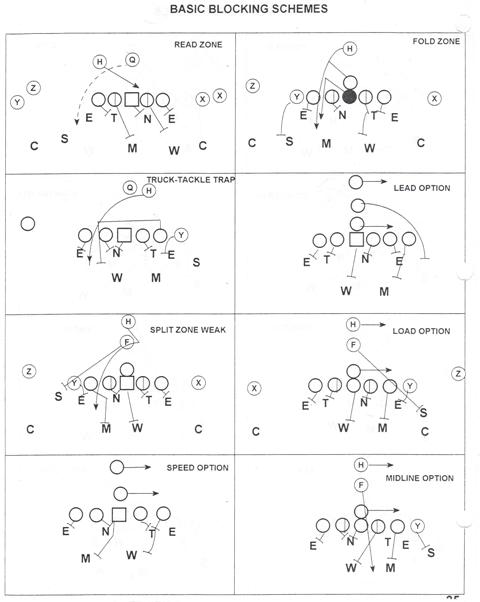
Retun to Football Techniques, From Offensive Formations
|